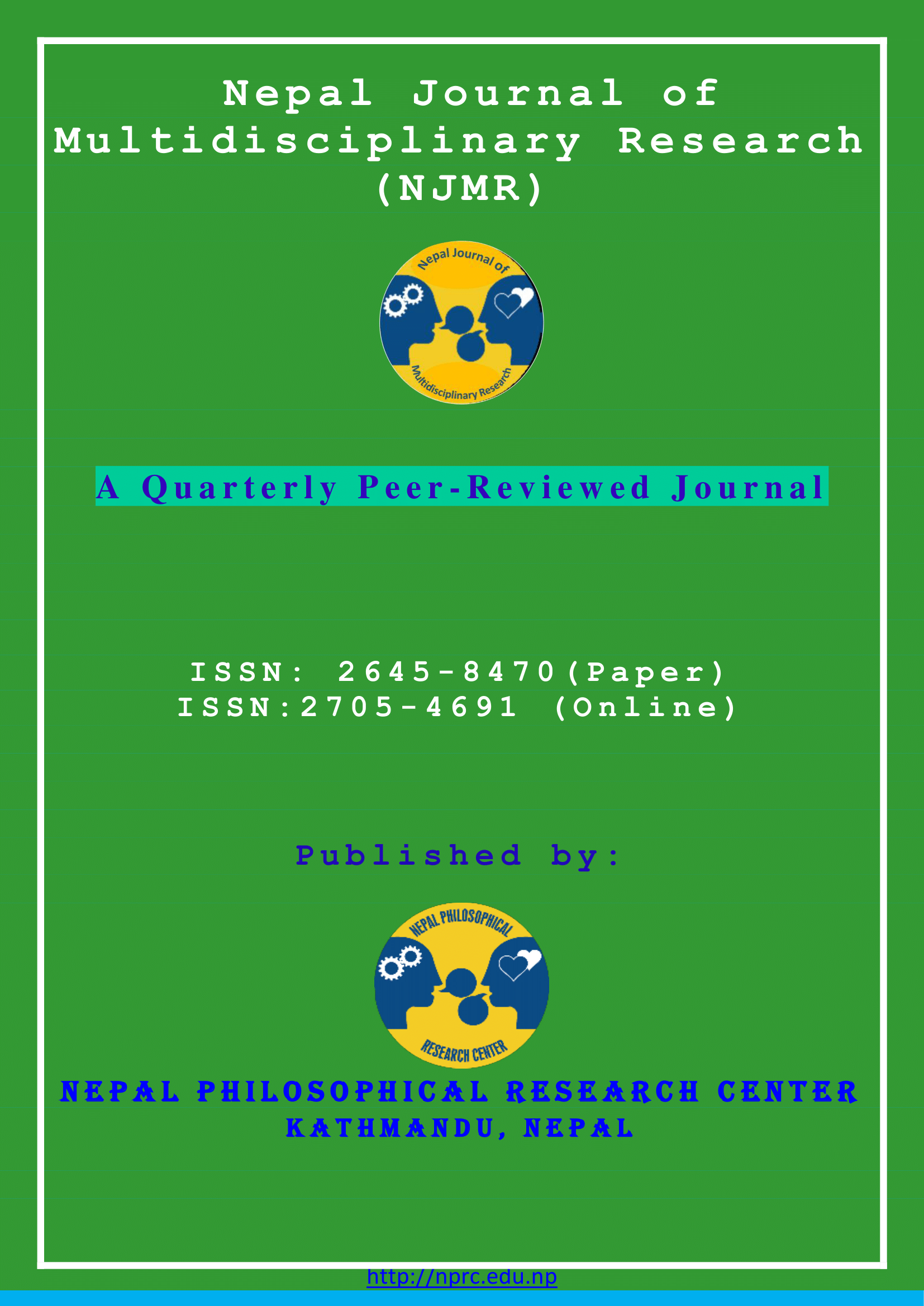Demographic Distribution by Eco-belt in Nepal (A case study of Solukhumbu, Kathmandu, and Chitwan)
DOI:
https://doi.org/10.3126/njmr.v3i3.34861Keywords:
Chitwan, Demographic, Distribution, Kathmandu, Solukhumbu, TopographyAbstract
Nepal is divided into three ecological belts viz. Mountain, Hills and Terai. Mountain region consists about 24% of country’s total area, hilly region covers 56% and Terai consists 20% of country’s total area. The study has selected three districts from these three ecological parts with objective to identify the demographic distribution based on the selected household. Out of the 77-district based on the Small Area Estimation – calculating the poverty variability keeping the max poverty rate and min poverty rate, the study chosen the 3 district - Solukhumbu, Kathmandu and Chitwan. Total 880 households were drowned from the selected villages by using the simple random sampling. Structured questionnaire survey and interview checklist were used to collect the data from selected households. The study found that there was prevalence of child headed and female headed family also in the study area which are known as the vulnerable group. The community and local government should ensure the security of families. Besides that, unemployment status was also found in the study area which might encourage for the aboard migration of youth. So, the concerned authorities should address such problem for the development of rural society.
Downloads
Downloads
Published
How to Cite
Issue
Section
License
This license enables reusers to distribute, remix, adapt, and build upon the material in any medium or format for noncommercial purposes only, and only so long as attribution is given to the creator.




